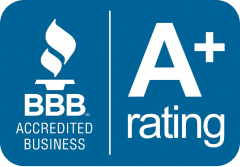Medicare is a federal health insurance programme for those who meet the program’s requirements, such as those who are 65 or older, have certain disabilities, or have end-stage renal disease (ESRD), also known as permanent kidney failure.
Medicaid and Medicare are two different insurance programmes, but the two names are often used interchangeably. While both Medicare and Medicaid are federal health insurance programmes administered by the Centers for Medicare and Medicaid Services, Medicaid is distinguished from Medicare primarily by the fact that it is a needs-based insurance programme. You can get Medicare regardless of your income level.
Certain Medicare services have monthly fees attached. On top of that, Medicare has rules and restrictions regarding the types of medical expenses it will cover. Read on for details about Medicare’s different components, the services they provide, and how to sign up.
Medicare Parts
When Medicare coverage becomes available to you, decisions will need to be made. You must first choose between enrolling in Part A and Part B, or just Part A and delaying Part B. Since there is no premium for Option A, it is the most popular. It is important to note that enrolling in Medicare Part A will prevent you from making further contributions to a health savings account (HSA). After selecting your Parts A and B, you’ll have the option of enrolling in either Original Medicare with the addition of a supplement and Part D, or a Medicare Advantage Plan.
The Medicare Parts A, B, and D coverage and associated costs are as follows:
| Medicare Part A |
|
| Medicare Part B |
|
| Medicare Part C |
|
| Medicare Part D |
|
| Medigap |
|
What isn’t Covered by Medicare?
Some medical procedures are not covered by Original Medicare.
- Long-term care
- Dental care (with some exceptions)
- Vision exams needed to prescribe glasses
- Dentures
- Cosmetic surgery
- Acupuncture
- Hearing aids and related exams
- Routine foot care
Medicare Supplement Insurance (Medigap) and Medicare Advantage plans are available to fill the gaps in coverage left by Original Medicare.
How Do I Enroll in Medicare?
Medicare enrollment can be completed in a few different ways. Certain individuals will be enrolled in Medicare automatically, while others will need to take proactive steps to do so. Three months before a planned start date, everyone should double-check with the Social Security Administration to make sure their paperwork is in order.
In the event that you meet the following criteria, Medicare will automatically enrol you:
- Have already begun receiving Social Security benefits (at least four months prior to start)
- Enjoy the benefits offered by the Railroad Retirement Board (RRB) of the United States (at least four months prior to start)
- Have a 24-month Social Security disability and are under 65
- Caused by amyotrophic lateral sclerosis (also known as Lou Gehrig’s disease, ALS, or end-stage renal disease, ESRD),
If you meet any of the following criteria, you must initiate your Medicare enrollment process independently:
- Have reached the age of 65
Are over 65 and not collecting Social Security
Your enrollment timeline may also be affected by special circumstances unique to you. For those who are eligible for but have not yet enrolled in a group health plan through their employers, delaying enrollment in Medicare Part B until after age 65 may be an option.
Medicare enrollment periods
Medicare’s Initial Enrollment Period (IEP) spans the three months leading up to your 65th birthday, the month you turn 65, and the three months following your 65th birthday. If your 65th birthday is June 14, for instance, the start of your IEP is March 1 and the end is September 30.
Part B late enrollment penalties kick in if you don’t sign up during your initial enrollment period and you aren’t covered by an employer health plan or you are volunteering abroad for at least 12 months. During the General Enrollment Period is the only time you can sign up for coverage (GEP). The GEP period begins on January 1 and ends on March 31, and coverage begins on July 1.
If you don’t enrol in Part B by the end of your IEP, you won’t be able to enrol in a Medicare Advantage plan until the General Enrollment Period (GEP). GEP enrollees have the option of signing up for either a Medicare Advantage Plan or Medicare Prescription Drug Coverage (Part D) between April 1 and June 30. During the first six months of having Medicare Part B, you are eligible to sign up for a Medigap policy.
When does Medicare coverage start?
When you enrol in Medicare determines when your coverage will begin. Keep in mind that the IEP enrollment period extends for a total of nine months: three months prior to your 65th birthday, the month you turn 65, and three months afterwards.
For example:
| When You Enroll | When Coverage Starts | Example: Turning 65 on May 10 |
| The three months before you turn 65 | The first day of the month you turn 65 | May 1 |
| The month you turn 65 | The first day of the month after you turn 65 | June 1 |
| The month after you turn 65 | Two months after you sign up | August 1 |
| Two or three months after you turn 65 | Three months after you sign up | October 1 (if you enroll in July) November 1 (if you enroll in August) |
If you sign up for Medicare Parts A and B during your IEP, you’ll also be able to enrol in Medigap and either Original Medicare or a Medicare Advantage plan, and have those coverages begin on the same day.
Your coverage will typically begin the following month after you enrol during a Special Enrollment Period.
You can apply for Medicare either online through the SSA’s website or in person at your local SSA office.








